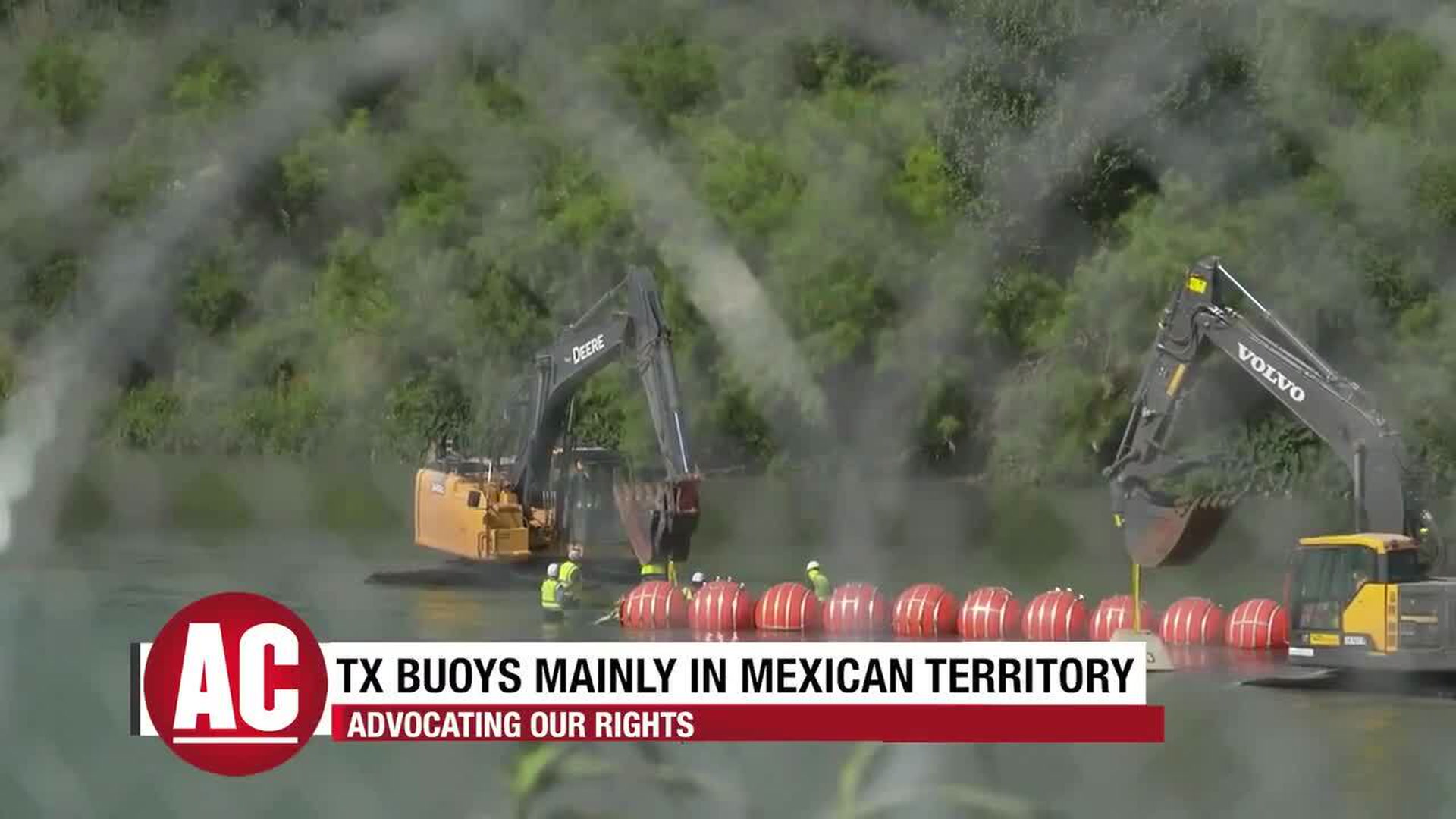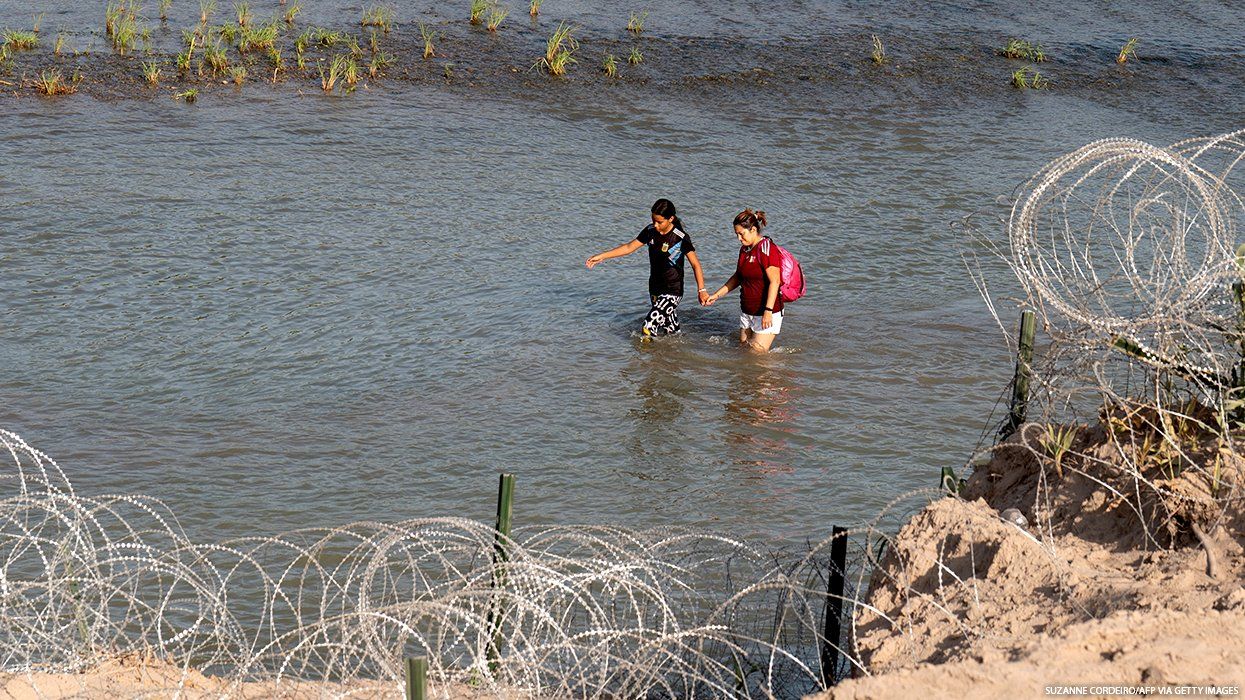The line of migrant-deterring buoys that splits the US-Mexico border along the Rio Grande is almost completely on the Mexican side of the river, according to a new international survey.
The floating barrier near Eagle Pass is part of Texas Gov. Greg Abbott's "Operation Lone Star" initiative, intended to prevent asylum seekers from crossing the Mexican border.
Most TX Border Buoys Are In Mexican Territory

Since being installed, the buoys have been the subject of scrutiny from the US and Mexico governments, as well as international agreements like the International Boundary and Water Commission. The buoys have posed diplomatic, environmental and humanitarian concerns, especially for asylum seekers.
Two bodies have already been found in the waters surrounding the buoys, including the body of a Honduran child, and another body caught in the barrier itself.
"The Texas Governor is knowingly trying to injure, maim and kill migrants seeking asylum in the United States with razor wire and drowning devices," Texas Congressman Joaquin Castro wrote on Twitter.
Last month, the Department of Justice filed a lawsuit against the state for their unlawful placement of buoys. They demanded that Texas Gov. Greg Abbott remove the barrier, citing unlawful construction under the Rivers and Harbors Act.
“This floating barrier poses threats to navigation and public safety and presents humanitarian concerns," said Associate Attorney General Vanita Gupta. "Additionally, the presence of the floating barrier has prompted diplomatic protests by Mexico and risks damaging U.S. foreign policy.”
The IBWC, a joint agreement between the US and Mexico, previously established that construction cannot inhibit the flow of the Rio Grande, and that the US does not possess sole jurisdiction of the river. The Mexican government alleged that the line of buoys crossed into their territory, in violation of diplomatic agreements.
As Texas Public Radio reported, a survey conducted by the IBWC proved Mexico's assertion to be correct — nearly 80 percent of the barrier is on the Mexican side of the river.
The Mexican government has called the barrier a violation of their sovereignty, and said that it has already damaged diplomatic relations.


















































